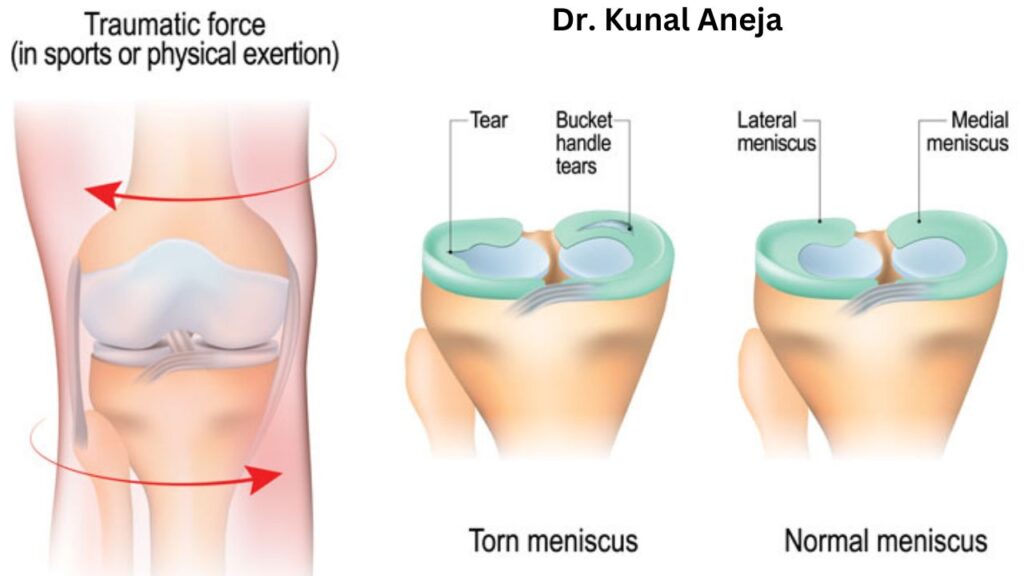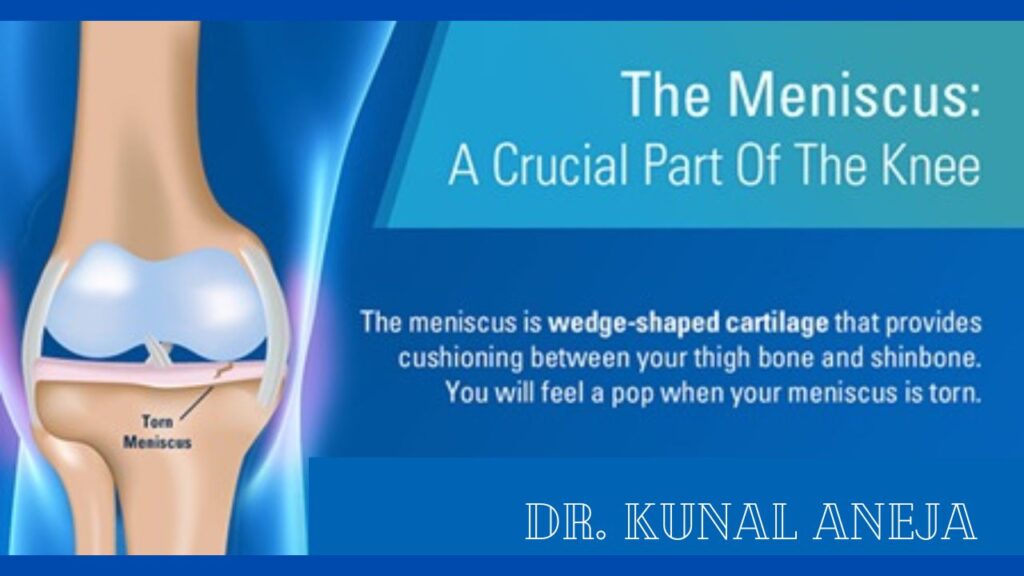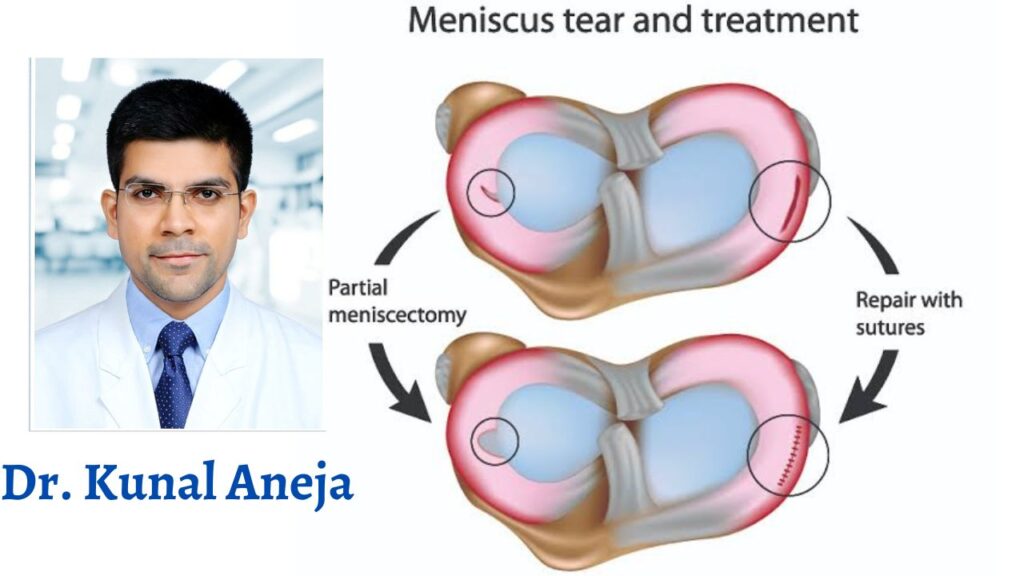
What is Meniscus Treatment?
Medial menisci sit between the thigh bone and the leg bone, and are soft rubbery bumper cushions. Injuries to the meniscus reduce the amount of stress placed on the articular cartilage on the thigh bones and leg bones as they act as shock absorbers. Meniscus injuries can occur in any age group. It is caused by almost any activity during which you squat, turn, or twist, which can result in injury. Symptoms of torn meniscuses include locking, clicking, and catching, which are often caused by fractures. Additionally, patients may experience swelling around the knee. The pain will be localized either on the inside or outside of the knee, depending on the severity of the tear. A thorough physical examination, history and special tests can help determine if a tear has occurred. A normal X-ray is usually done, and if there is any doubt, an MRI can be obtained to confirm the diagnosis. You can watch a video here to learn more about meniscus tears. Tears usually remain symptomatic until they interfere with daily activities or sports and recreation activities, in which case they need to be treated.
Meniscus tears are rarely repaired, despite the fact that they are part of the knee which protects against wear and tear. Surgery surgeons try to repair them whenever possible. Due to the limited supply of blood to the meniscus, tears in areas that do not have enough blood flow will likely not heal. Additionally, it is difficult to determine whether a meniscus tear can be repaired before surgery based on the pattern of the tear.

An appropriate technique can be used to repair a meniscus tear if it is considered appropriate. The operation usually involves arthroscopic surgery (minimally invasive); however, additional incisions or cuts may need to be made to repair the tear. There are several devices or sutures that can be used to perform a knee reconstruction. Patients who also have a reconstruction of the ACL
and a meniscus tend to be more bloody. As a result, when an ACL reconstruction is performed concurrently with meniscus repair, the meniscus repair success rate is higher than when it is not. It is also possible to use platelet rich plasma (PRP) to improve blood supply to the meniscus repair as an alternative to using a portion of the patient’s own blood.
Most patients are able to start walking right away after a meniscal repair, though a brace may be necessary. Depending on the severity of the repair, patients may not be able to put weight on their knees for several weeks after the surgery. After surgery, runners typically cannot run until 3-5 months, while full rehabilitation to sports and squatting typically takes around 4-6 months.
The meniscus (the crescent-shaped disc of cartilage between the femur and the tibia of the knee) serves as a cushion between the bones of the knee. Torn meniscus symptoms can include pain, swelling, stiffness, clicking, and locking of the knees, among other symptoms that indicate a torn meniscus. There are two menisci on each knee.

The Benefits of Meniscus Tear Treatment
- If you are a dedicated athlete who wants to get back to your sport or if you just want to move around more to get to know the people around you, we aim to help you achieve your goals.
- To reduce the possibility of complications from meniscus tears in your knees and feet, our team will help you decide what type of treatment plan is best for you.
- By performing strengthening exercises and taking other measures, our specialists will teach you how to prevent further knee injuries if the meniscus is torn again.
Treatment options for meniscus tears
Treatments for meniscus tears range from icing, pain medication, and surgery, depending on your symptoms and tear type.
Options other than surgery
Among the non-surgical treatments are:
- Icing
- Bracing
- Pain medication
- Muscle-strengthening exercises

Surgical treatment for meniscus tears
Using an arteroscopic surgical technique, the surgeon can make only a few cuts in the knee, allowing you to recover from meniscus tear surgery with full range of motion. Following surgery, rehabilitation exercises will help strengthen the muscles supporting the joint.
Partial Meniscectomy
An effective method for treating a meniscus tear is a partial meniscectomy, which involves snipping off the torn portion of the meniscus, while keeping as much of the remaining meniscus tissue intact.
Mensicus Repair
Some patients who have torn their meniscus may be stitched back together, depending on the severity and condition of the tear. This procedure is more common with younger patients. Due to the fact that the meniscus tissue must heal back together again after this procedure, it usually takes a much longer recovery time than partial meniscectomy. A return to sports activity may take up to a year or longer depending on how long it takes to recuperate after surgery. Patients usually use crutches for about two weeks and braces for up to six weeks.

What are the qualifications for a meniscus repair surgery?
Symptoms of knee pain or swelling, as well as changes in your knee’s movement, should be reported to your healthcare professional immediately.
What is the purpose of meniscus repair surgery?
If you have a meniscus injury, you can use NICE (Nonsteroidal Anti-Inflammatory Drugs, Ice, Compression, and Elevation) or RICE (Rest, Ice, Compression, and Elevation) therapy. When you suspect you are suffering from a meniscus injury, you should seek medical attention immediately since there isn’t much blood supply to the ‘white’ zone. Without proper nutrition support, these injuries won’t heal. Meniscus injuries can also lead to other knee problems if not treated. Inflammation, popping, and locking of the knee are all symptoms of loosening meniscus cartilage. Chronic meniscus injuries can also result in arthritis. To prevent these problems from recurring, meniscus repair surgery is performed.
What are the Different Types of Meniscus Repair Surgeries?
Meniscus repair surgery can be classified into the following types:
- Arthroscopy involves cutting the knee in order to insert an arthroscope to see the tear and stitch it. Once the stitches are in place, the body absorbs the stitches. During arthroscopic surgery, the knee is cut and the arthroscope inserted for a better view.
- To improve the function of the knee, the surgeon removes a small piece of the torn meniscus.
- Your Dr. Kunal Aneja may perform a meniscectomy with arthroscopy where the entire meniscus is removed.
What are the Benefits of Meniscus Repair Surgery?
The following are some of the benefits of meniscus repair surgery:
- Sports or other activities can be resumed more easily with it
- Improved mobility
- Stabilizes your knees
- Arthritis can be slowed or prevented by treating it
- Pain is reduced

What are the Complications Associated with Meniscus Repair Surgery?
Among the rare complications associated with meniscus repairs, despite their relatively low-risk nature, are the following:
- Viruses
- Knee pain
- Knee nerve damage
- In the late stages of life, arthritis can develop
- Blood clots
- The knee area is swollen with blood
Dr. Kunal Aneja is one of the best ACL and orthopedic doctors in Delhi. Dr. Kunal will provide the best treatment at Naveda Healthcare Centre Delhi

